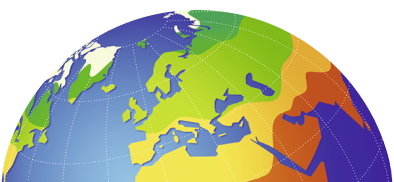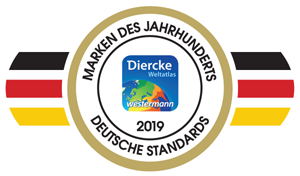Europe - Official languages and linguistic minorities
Population and migration
978-3-14-100890-6 | Page 68 | Ill. 3

Overview
Most of the languages spoken in Europe belong to the Indo-European language family and use Latin characters. This large family of languages presumably originated in the region between Central Europe and the Ural Mountains. Scholars do not agree on whether the first speakers were members of a homogeneous Indo-European people. The three most important branches of the Indo-European language family are the Germanic, Romance and Slavic languages. The Estonian, Finnish, Hungarian and Turkish languages exhibit no affinities to the Indo-European language family.
The role of Indo-Europeans in Europe
From a centre located between Central Europe and the Urals, the Indo-Europeans split into expanding ethnic groups around 2000 BC. While one line of advance proceeded toward the Indian subcontinent and the Middle East, the other moved into Europe. The individual Indo-European languages emerged through processes of splitting and intermingling with indigenous language elements.
Uralic language family
Estonian, Finnish and Hungarian belong to the Uralic language family, which originated on the Volga and in the Urals. The group of Uralic languages also includes the Sami languages, which are mainly native to northern Scandinavia, the Karelian language, which is spoken in parts of Russia, and the Nenets language in the tundra and northern taiga.
Language islands
Through warlike and peaceful expansion of European peoples, languages have retreated and formed islands over the millennia. Examples of this are the Celtic languages in Wales, Brittany and Ireland, Catalan and Galician in Spain, the Slavic-Sorbian language island in Central Germany and Romansh in Switzerland. These languages also include Basque in Spain and France or Kurdish in the quadrangle of Turkey, Syria, Iraq, and Iran. Some of the ethnic groups speaking these languages insist on their linguistic, cultural, and ethnic identity and demand national autonomy or self-reliance.
Indo-European language families
The Germanic languages comprise two distinct groups: The West Germanic (English, German, Dutch, Frisian) and the North Germanic languages (Swedish, Danish, Norwegian, Icelandic).
The Slavic languages are divided into Eastern Slavic (Russian, Ukrainian, Belarusian; Cyrillic script), Western Slavic (Czech, Slovak, Sorbian, Polish, Kashubian; Latin script) and Southern Slavic (Slovenian, Serbian, Croatian, Bulgarian, Macedonian, Montenegrin; except for Slovenian and Croatian, Cyrillic script).
The Romance languages - which emerged from Latin, which reached large parts of Europe through the expansion of the Roman Empire and also had a lasting influence - are not subdivided further.
Most spoken European languages
As seen on the right, the most widely spoken languages in Europe are Russian, German, English, French, Italian, and Spanish. This can be explained by factors including the number of countries the particular language is spoken in as well as its populations.




